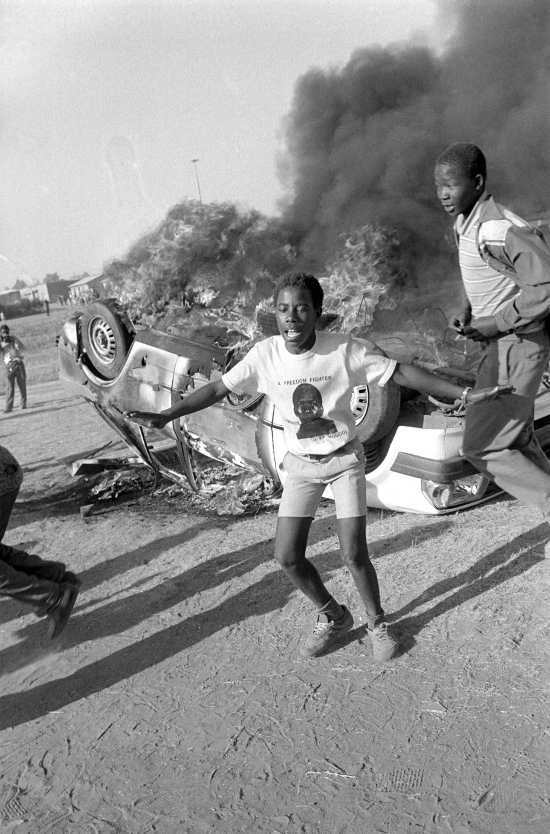 Black youth fought many hard battles to achieve a better future and they were not easily won. There were times when their voices were loud and others, when their voices were silenced. When South Africa’s freedom was won in 1994, there was no doubt that the youth had played a crucial role. Let us look at some of the origins of youth struggle.
Black youth fought many hard battles to achieve a better future and they were not easily won. There were times when their voices were loud and others, when their voices were silenced. When South Africa’s freedom was won in 1994, there was no doubt that the youth had played a crucial role. Let us look at some of the origins of youth struggle.
In the 1940s, more and more black people moved into the urban areas to try to find a way to earn a living. A black population emerged and women and their children moved into the towns and the cities. This led to pressure in terms of housing and people lived in overcrowded townships in very harsh conditions. Unemployment was extremely high and poverty was widespread. Young black youth faced particular hardships, as there were few prospects available to them.
Without much parental supervision, as both parents usually worked long hours, many took to the streets and became petty criminals. Others joined gangs as this gave them a sense of purpose and belonging. These young men were known as tsotsis. Although they contributed to a vibrant urban culture that developed in the locations and townships, their activities also spread violence and fear.
A more political response to the growing crisis in urban areas and amongst black youth was the formation of the African National Congress Youth League (ANCYL) in 1944. In the 1940s, the African National Congress (ANC) was considered to be an elite organisation that was somewhat out of touch with the needs of the ordinary African people. Its Youth League was to breathe life into the organisation as it called for a more mass-based approach to the struggle.
Membership of the Youth League was open to all Africans between the ages of twelve and forty. The Youth League leaders included Anton Lembede, its first president, Nelson Mandela and Walter Sisulu and Oliver Tambo. These young men became known as the ‘Young Lions’ as they called for a more militant programme of action in the form of mass protests, boycotts and passive resistance.
The ANCYL changed the nature of resistance to the state and reflects an important shift in ANC policy. Its leaders were young, dynamic and committed to change. Over time, they became the leaders of the ANC itself and played a highly prominent role in the organisation and in the struggle.
However, when the ANC was banned in 1960, many of its young members went into exile and joined Umkhonto we Sizwe, the armed wing of the ANC. They received training in guerrilla warfare as a means to conduct a campaign of sabotage against the apartheid state. This meant that the Youth League was not an active force in South African politics for the next thirty years.
Exhibitions in the classroom
Visualising the past
- What message do you think de Vlieg was trying to get across with this photograph? Use evidence from the photograph to justify your answer.
- What emotions does this photograph evoke from you? Explain your answer with reference to elements in the photograph.
Reading the Past
Write a diary entry
Imagine you are one of the boys in this photograph. You live in a township in the 1980s where the police and the army continually patrol the streets. Write your diary entry at the end of the day in which you describe the events that led up to this photograph being taken.



